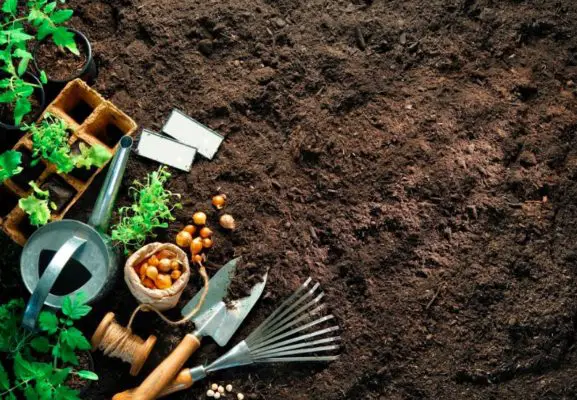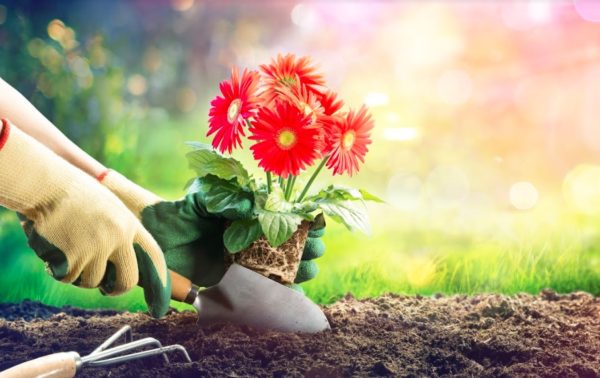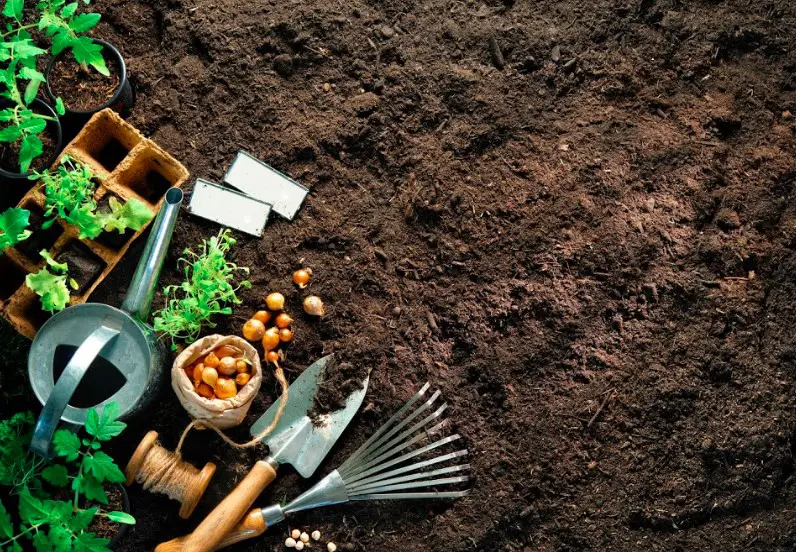Have you ever dreamt of creating a garden that will be the envy of your neighbors? The gardens that look easy to maneuver, but hold studding plants are the best to have. These types of gardens are the easiest to maintain and build around as they consist of elements that actually accentuate the surrounding environment and work well with each other. Landscape artists even prefer these types of gardens as they’re simple and accessible.

You can build one, too, with a little help from this article. Here are some tips to help you start your own garden:
1. Use A Topsoil
The first thing you need to know is that topsoil is different from garden soil. This is the first mistake some beginners make when starting their own gardens. Different types of soil provide different benefits.
Topsoil should be your soil of choice since it provides a wider form of use. It’s usually credited to providing great airflow that most plants need.
Garden soil is simply nutrient-enriched topsoil, strengthened with compost. A garden soil has a more intentional use as it provides nutrients for plants for many years. This type of soil tends to be worth its high price.
The keyword is decent as not all topsoil is best for your plant. However, it will be safe to assume most stores, like Missouri Organic Recycling, will sell you the best topsoil. If you want additional information, it pays to research the topsoil you’re about to use.
You want a topsoil that doesn’t have too much sand and clay mixed with it. Also, topsoil comes at a relatively lower price than garden soil, perfect for someone just starting out. Don’t forget to use a tactical shovel for digging, moving and spreading topsoil. It will save a ton of your gardening time.
2.Site Selection
Where your garden will be located will determine the success of this project. Here are some tips to ensure your garden thrives:
- Plant close to your water source: This will help you in the long run since heat waves and dry seasons have become normal occurrences in some parts of the world. Having it close to a water source reduces the work you’d need to do to keep your plants healthy.
- Decent sunlight: Plants need sunlight in order for them to grow as it’s an essential part of photosynthesis. You should choose areas that don’t get too much shade and are given lots of sunlight.
- Leveled and loose soiled area: This type of area actually provides decent drainage for your plants and prevents water from gathering. Plants tend to die out or simply not grow if the area you chose accumulates water over time. This is why all plant pots have holes at the bottom.
3. Choosing A Plot Size
The best option is for you to start small. Don’t overwhelm yourself with a large plot to take care of since pruning and removing weeds will become part of the daily maintenance.
Some people actually have a good chunk of land area to build their garden. Sometimes, however, your neighbors’ trees or buildings can get in the way of sunlight. These are also factors that you should consider when choosing a plot size.
In addition, you might also want to consider what you’re planting when choosing a plot size since different types of plants require spaces unique to their respective sizes.
4. Plants
Vegetables, for example, take up little space. Plant vegetables that are enough for your family. This prevents overstocking of unused vegetables, which might end up in the garbage bin. In addition, choose vegetables that you and your family actually eat. You may also grow fruits in containers to add some variety to your vegetable garden.
Flowering plants are generally divided into two types: perennials and annuals. Each comes with its own advantages and disadvantages. The difference between the two is that annuals bloom for most of the summer, however must be replanted early. Perennials, on the one hand, bloom at a shorter time, only needing pruning and some maintenance work.

5. Pathways
Consider the maintenance work that’ll be involved when your garden is fully operational. Whatever size you decide to have, don’t forget pathways that will be an asset when you execute much needed maintenance work. The rule of thumb is usually one pathway for every four feet, although you can always change it depending on your garden’s size, at the very least.
6. Create Unity And Diversity
When creating your garden, make sure it’s aesthetically pleasing. Even vegetables have colorful leaves, and grouping them can make them look better. Don’t forget that even plants of the same breed can produce different colors. Make sure these colors don’t clash with each other.
If you have plant that doesn’t blend well with others, providing distance between them could provide a buffer. However, if you’ve not yet chosen your plants, here are some design ideas you can use for your garden:
- White, grey, and blue: With this theme, you can incorporate multiple plant types from the purple design, but it’d allow for a great transition if you decide to move away from the pure purple theme. Just add some daisies, white roses, and cauliflower for this theme to come about.
- Purple: Plants like petunias, lavender, ajuga purpurea, alyssum, purple lettuce, rosemary, rhubarb, rainbow chard, beetroot, eggplant, thyme, and purple basil will match this color scheme.
- Yellow and orange: Plants such as yellow chilies, orange char cosmos, nasturtiums, yellow cherry tomatoes, calendula, orange marigolds, and yellow capsicums would be perfect for this theme.
Conclusion
Whatever design you choose, make sure that it also matches the surroundings and the pathways. After all, your garden shouldn’t only consist of plants as there are some accessories that could enhance the beauty of your flowers. Just make sure the elements match.
With some tips and tricks you just learned, building your garden will become easy. Of course, it still pays to have a good plan and to execute it well. Remember to start small, and then slowly work your way up into a larger garden. This way, you won’t have to deal with large-scale issues at the start of your gardening journey.
If things are still unclear for you, you can always look for online communities to help you with your garden. Some shop owners would also be happy to help you. If all else fails, there are professional gardeners and landscape architects you can hire.
This process will be long and sweaty, but when your beautiful garden comes together, all the effort will be well worth the wait.


